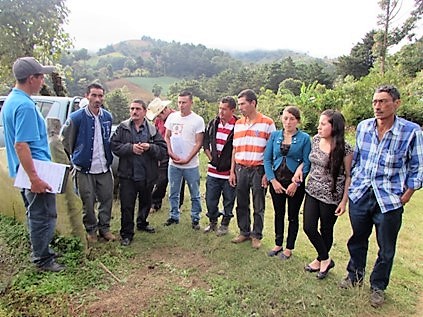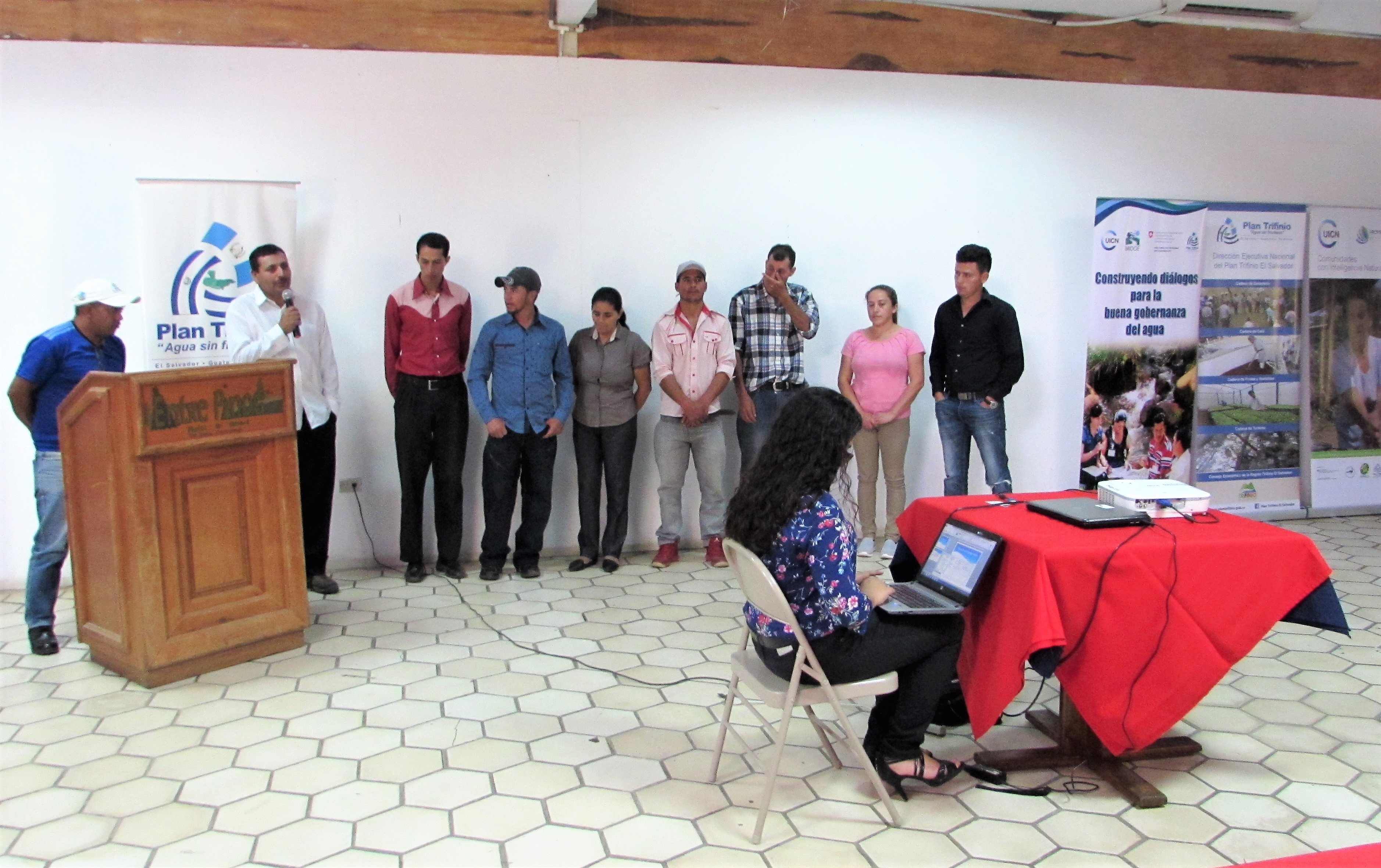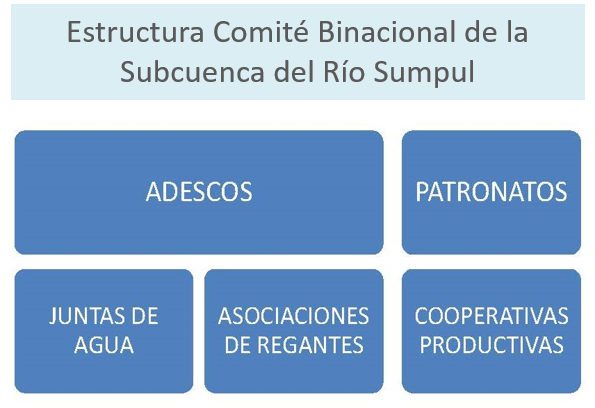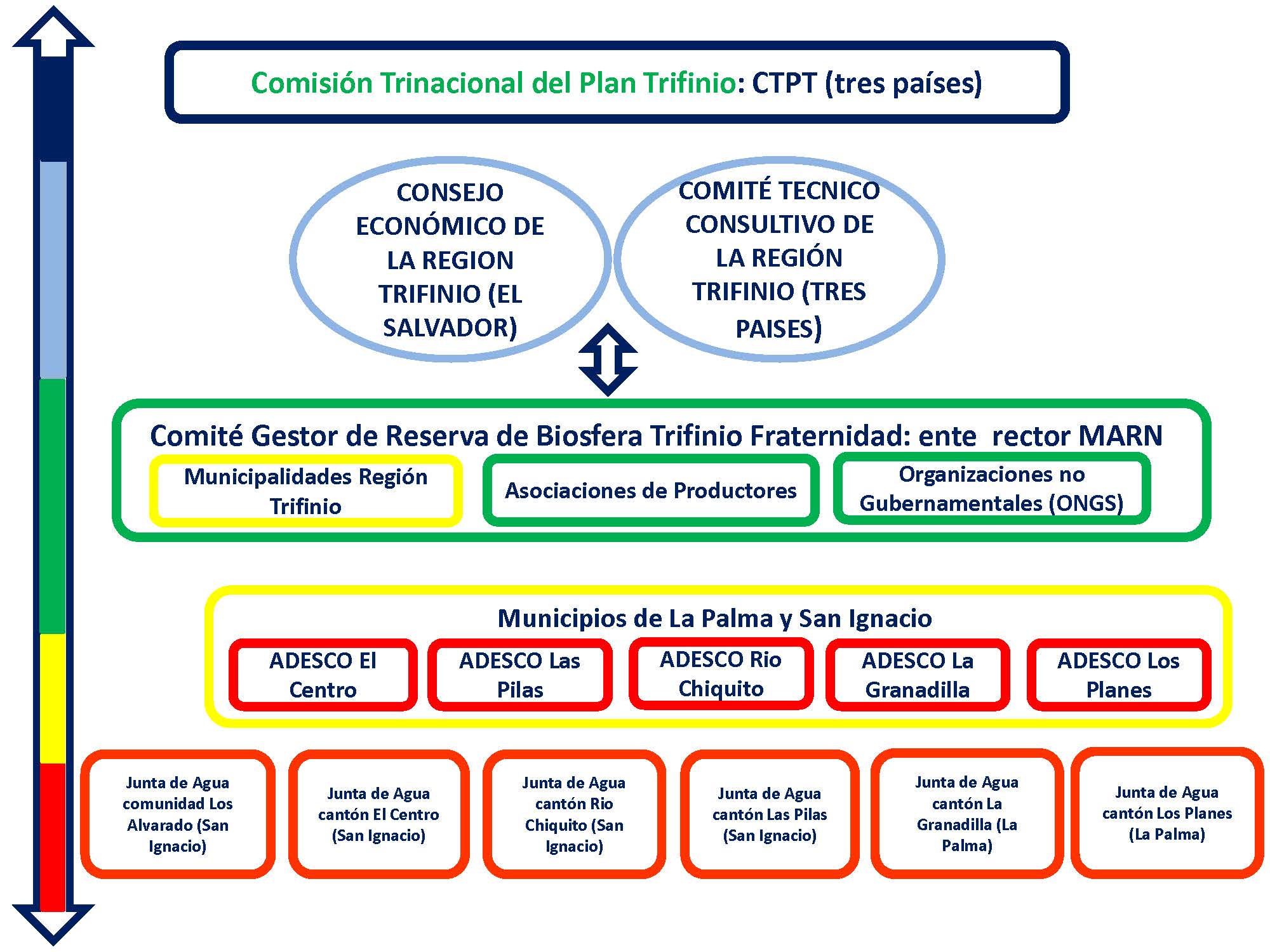




Multilevel and multisectorial governance for adaptation implies working at multiple levels and with differente sectors. It requires creating connections for better articulation between territorial actors.
In the upper part of the Sumpul River sub-basin, this entailed working closely with grassroots (community-based) organizations to develop bottom up water resource management. This was done supporting the conformation of Water Committees linked with Community Development Associations (ADESCOs), the Municipalities and the Binational Community Committee.
The capacities of 4 Water Committees and their supply systems were strengthened and were thereafter formalized under municipal governance.
Moreover, and following the multilevel governance approach, the Binational Community Committe was strengthened throught restructuring advice, trainings, new management tools, and greater links with municipal governments. This Committee is now leading community water issues to prevent conflicts around water use.
- Honduras legal framework (General Water Law) that defines different water basin governance structures; and in El Salvador the regulation of the ADESCO Water Committees, with a public health mandate.
- The existence of the Binational Committee was key, since work did not start from scratch, but rather focused on their strengthening and restructuring, respectively.
- The articulation of project and organization efforts across a territory is fundamental (e.g. between IUCN and Plan Trifinio)
- The strengthening of existing local and community structures is vital, as these have the ability to sustain the progress and changes achieved in the territory, despite the alternation of local authorities.
- The ADESCOs and the Binational Community Committee undertake important mediation tasks, since the management of water resources can generate conflicts due to the diversity of interests that converge on this issue.
- The articulation of project efforts across a territory is fundamental (e.g. between the AVE and BRIDGE projects) to achieve greater impacts and efficiencies, through coordinated project agendas.
- The BRIDGE project in the Goascorán River basin (El Salvador-Honduras) left the following lesson learnt that is also relevant in this case: "Water diplomacy does not necessarily follow a straight path. Effective strategies need to incorporate multiple dimensions and a phased approach, interconnecting existing and emerging structures in the basin."